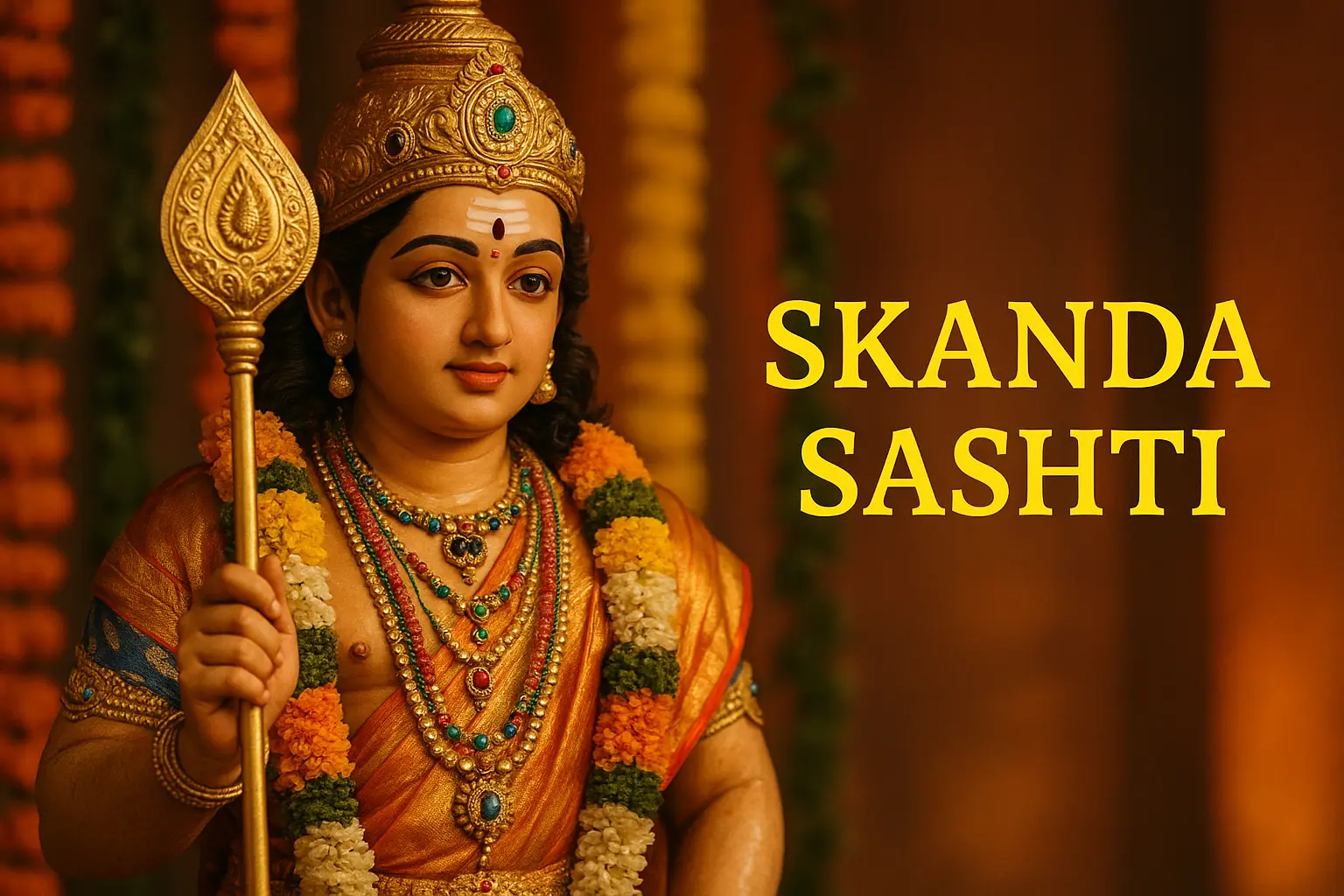Skanda Sashti: Celebrating the Triumph of Lord Kartikeya ⚔️
Celebrate Skanda Sashti 2025, honoring Lord Kartikeya’s victory! Learn its history, rituals like Soorasamharam, and how to join Tamil Nadu’s vibrant festivities. Embrace devotion and triumph! 🎉
Aditya Pandey

Skanda Sashti, a vibrant Hindu festival, honors Lord Kartikeya, also known as Skanda, Murugan, or Subrahmanya, the divine warrior and son of Lord Shiva and Goddess Parvati. Celebrated on the sixth day (Sashti) of the bright fortnight in the Tamil month of Aippasi (October–November), Skanda Sashti commemorates Kartikeya’s victory over the demon Surapadman, symbolizing the triumph of good over evil. Known for its fervent fasting, grand temple rituals, and the dramatic Soorasamharam (demon-slaying reenactment), Skanda Sashti is a cherished festival, especially in Tamil Nadu, Sri Lanka, and among Tamil diaspora communities.
For a deeper understanding of India’s rich festival traditions, explore Ancient Festivals of India.
Historical Background of Skanda Sashti 📜
The origins of Skanda Sashti are deeply rooted in Hindu mythology, with references found in ancient texts like the Skanda Purana and Tamil scriptures such as the Tirumurugāṟṟupaṭai. According to legend, Lord Kartikeya was born from the divine sparks of Shiva’s third eye to lead the celestial army against the demon Surapadman, who tormented the gods and humans. After six days of intense battle, Kartikeya vanquished Surapadman on the sixth day, an event celebrated as Skanda Sashti.
Historical evidence suggests Skanda Sashti has been observed for centuries, particularly in South India, where Kartikeya is revered as Murugan, the patron deity of the Tamil people. The festival gained prominence during the Chola and Pandya dynasties (9th–13th centuries CE), with grand celebrations documented at temples like Palani and Tiruchendur. Tamil saint Arunagirinathar’s 15th-century devotional hymns, Tiruppugazh, further popularized Skanda Sashti by extolling Murugan’s valor.
Today, Skanda Sashti is a major festival in Tamil Nadu, Kerala, Karnataka, and Sri Lanka, with global Tamil communities celebrating it fervently. Its historical significance lies in its role as a spiritual and cultural anchor, uniting devotees in devotion to Lord Kartikeya. 🕉️
